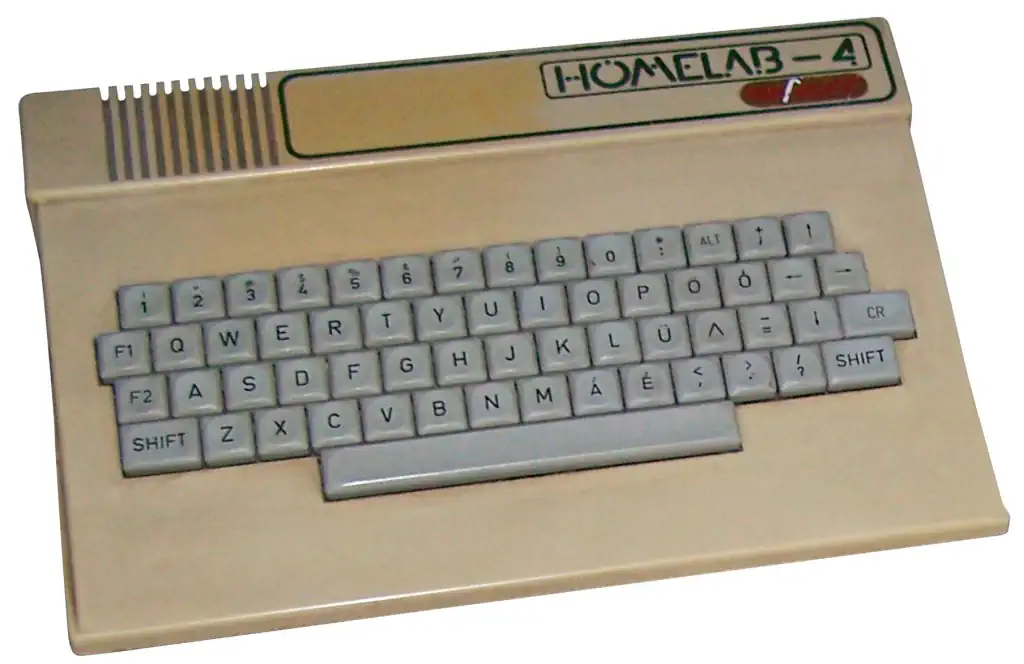BraiLAB - HomeLAB 4 for the blind
When the text-to-speech extension was created for the HomeLAB computer, a married couple working at KFKI, András Arató and Teréz Vaspöri, created a voice synthesizer and used it to extend the HomeLAB IV and create a talking computer that would turn any text, wether it was a BASIC program or Hungarian text, into speech, with all the correct stressing of sentences implemented. This computer was known as the Brailab, or the HomeLAB-4 Braille. The specific HomeLAB-4 has a little cane symbol under its logo, to signify the inclusion of the voice synthesizer.
Brief history of HomeLAB
In the spring of 1982 József Lukács and his younger brother Endre decided to create a computer that was accassible to the Hungarian youth. They designed a computer, the Homelab II, whiich was manufactured under the name Aircomp 16. The computer was pdoduced by a small company called Personal GT. The later models of the Homelab computers were produced by the Color Industrial Co-operative in Dombóvár.
The Aircomp 16 was expensive to produce and the brothers ran out of funding. Ultimately when Homelab III was produced, the brothers released the documentation and basic units like the PCBs so users could purchase the computer as a kit, and assemble their own at home. The Homelab computers were built in large numbers by amateurs at home, based on the circuit diagrams published in the MikroszámÃtógép Magazin.
RAM max: 64kB
ROM: 16kB
VRAM: 4kB shared Sound unknown Display Chip none Display 64x32 monochrome text Best Text 64x32 text Sprites none System OS BASIC in ROM Storage External Tape

